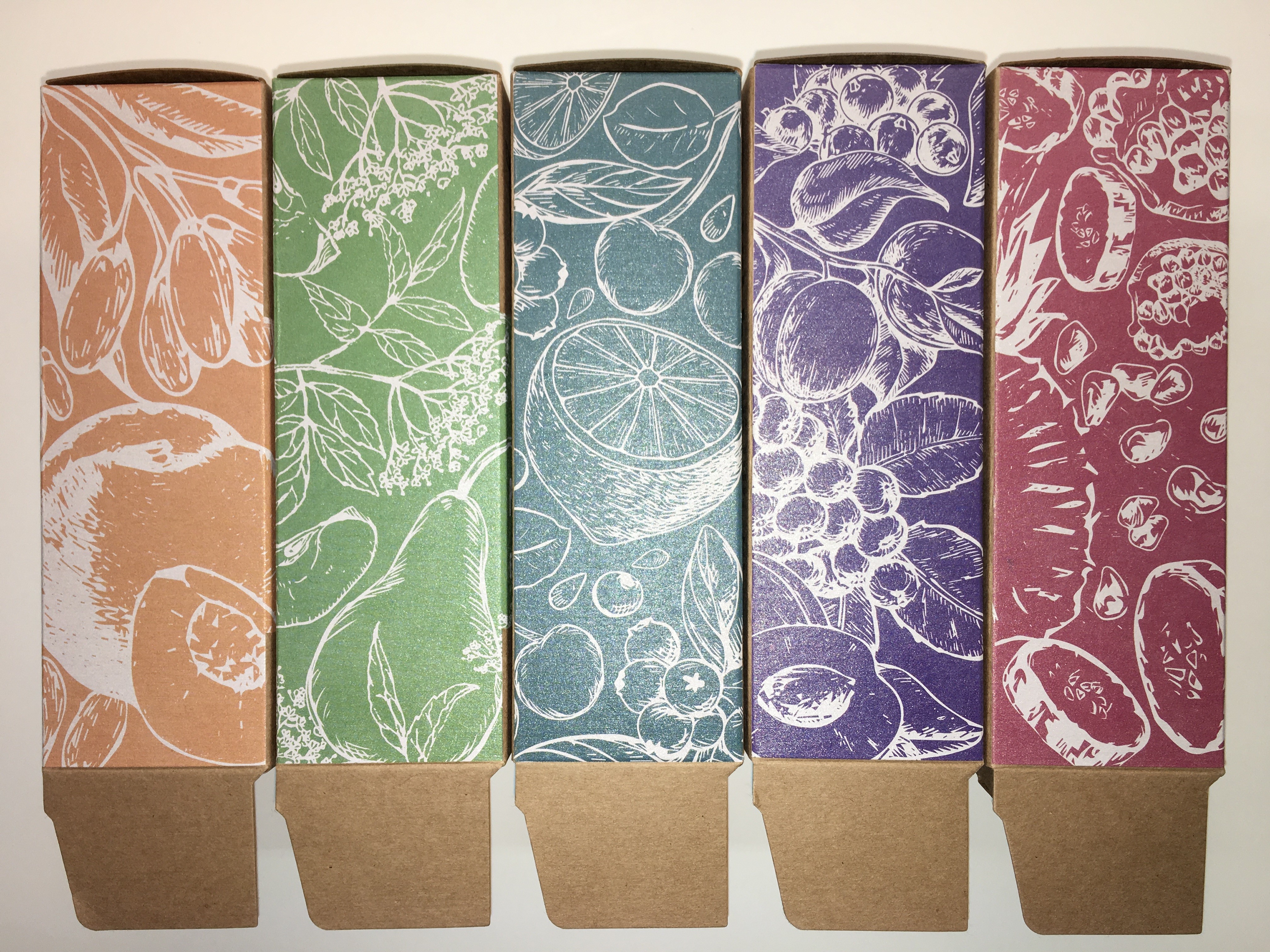As products for the printing and packaging industry continue to evolve and improve, we are constantly looking for the next ‘big thing’.
And as strong advocates of the most sustainable options available, we were delighted to recently print boxed packaging for a customer using Kraft paperboard. It’s a very simple but effective material with a short process journey from tree to board to us.
So what is it and how does it work?
Kraft paperboard has a natural brown appearance. It is an uncoated, unbleached, lightweight material which is extremely strong and therefore very durable. This makes it ideal for product packaging boxes including food packaging which has to deal with fluctuating temperatures.
And despite its brown colouring, the finished result, if done correctly, is polished and professional. With the right know-how and equipment the end result is impressive.
The dull brown appearance – which is necessary to ensure minimal additives and chemicals are used – can put customers off. But beginning the print process by printing a clean white base layer first, and then adding colours on top, you can achieve an excellent finish whilst looking and feeling better for the environment (which it is!) A state-of-the-art LED printing press (which we have) is essential, however, as the coloured ink dries instantly preventing the colours sinking into the board and becoming distorted.
It’s also very useful for those seeking a low-allergen packaging product, particularly food manufacturers, as it doesn’t contain standard ingredients such as egg white which many white boards do have. Nor does it contain other surprisingly found food-related materials such as those derived from milk, wheat, peanuts, shellfish, gluten, natural rubber or natural latex.
Kraft paperboard is not a new phenomenon (it’s been about for around five years) but it is still largely undiscovered by many. We cannot rate it enough. Our recent experience was an excellent one and the customer was pretty ecstatic too!
So if you’re looking for robust versatile packaging which ticks the anti-allergen box (excuse the pun…) and protects the planet, Kraft paperboard could be the way to go.

